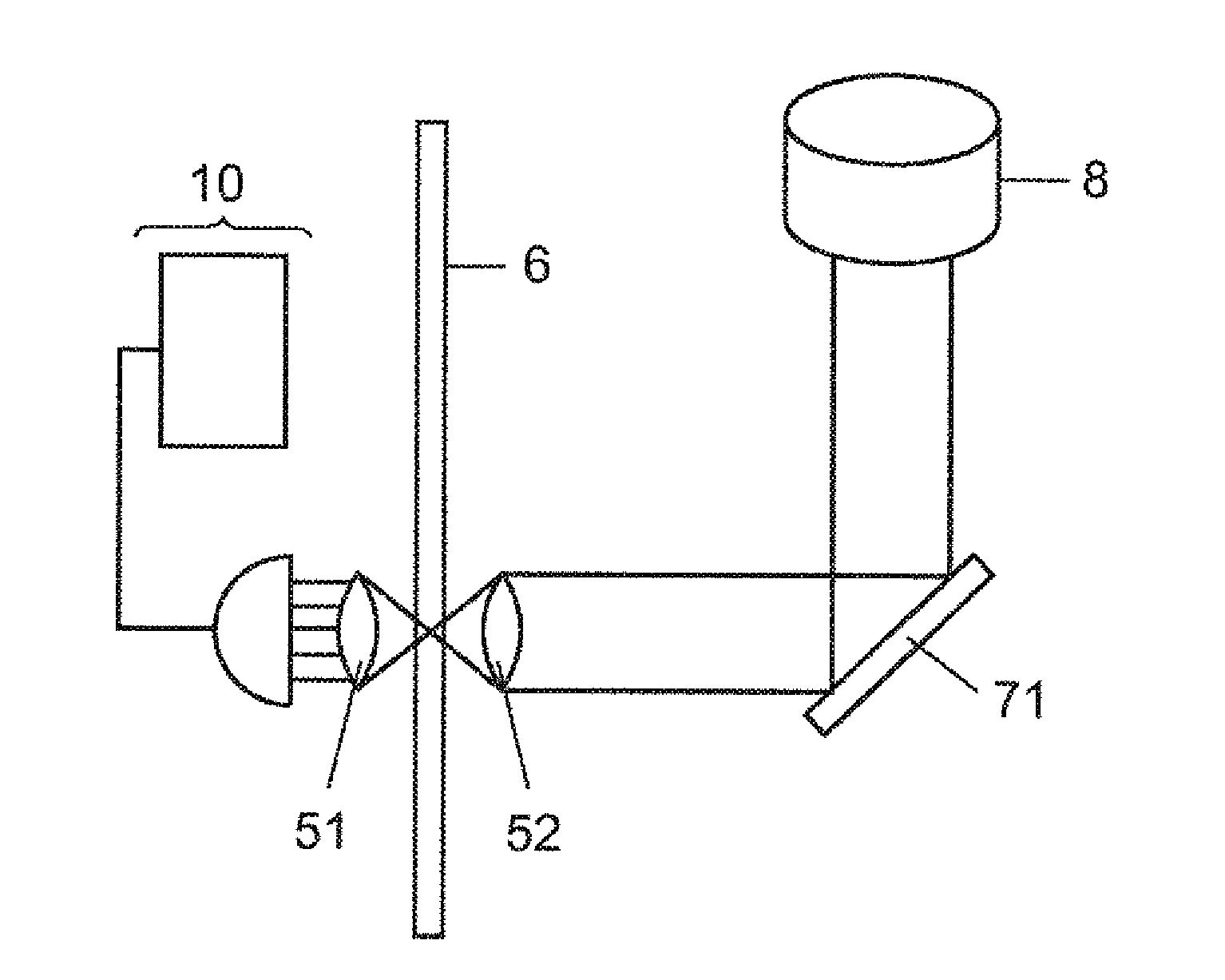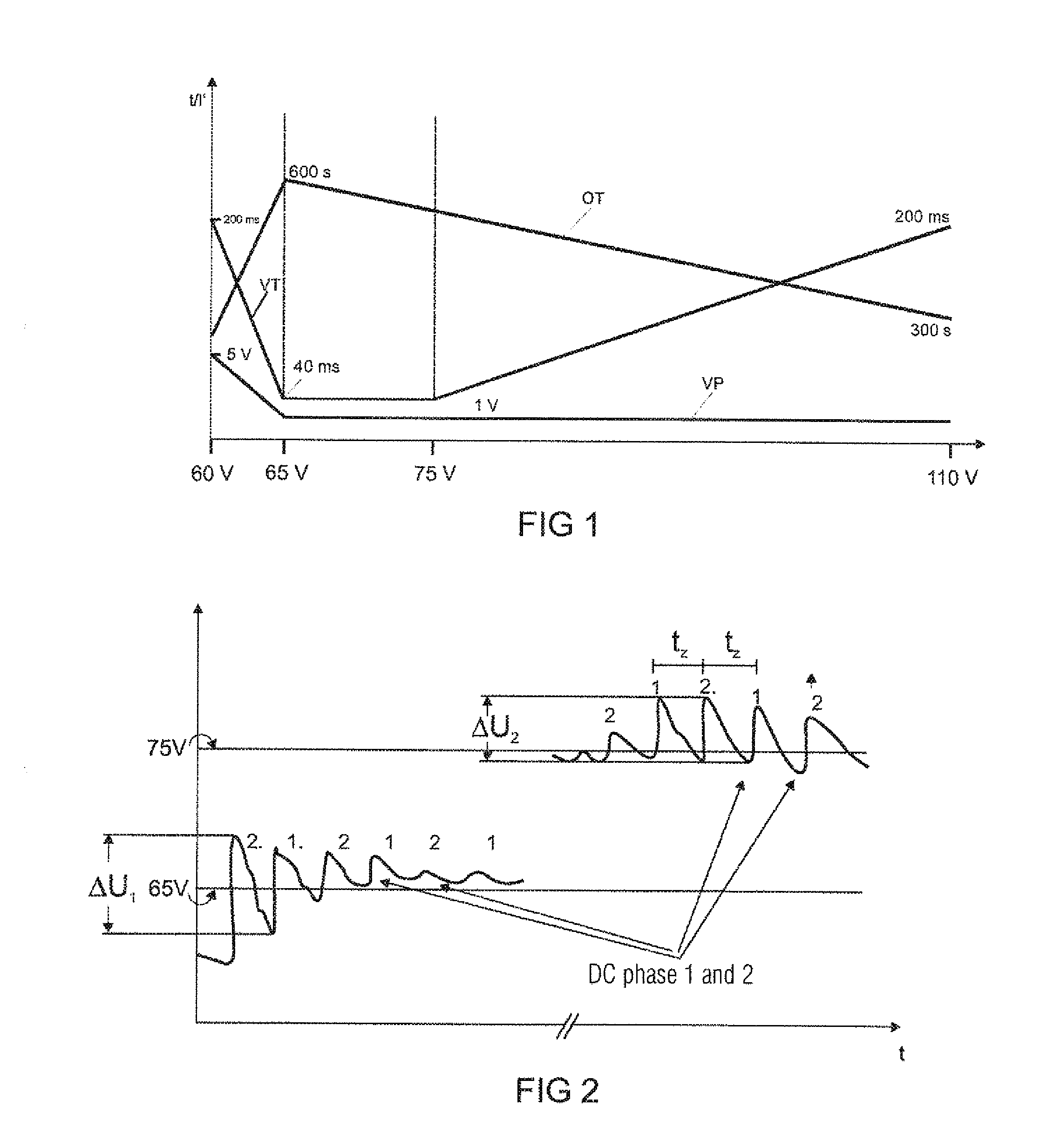Method and electronic operating device for operating a gas discharge lamp and projector
a technology of electronic operating device and gas discharge lamp, which is applied in the direction of projectors, light sources, instruments, etc., can solve the problems of inability to meet the requirements of high-pressure discharge lamps, the ratio between current intensity and light level is not necessarily linear, and the electronic operating device for these lamps is more expensive. achieve the effect of maximum compatibility and good operational reliability
- Summary
- Abstract
- Description
- Claims
- Application Information
AI Technical Summary
Benefits of technology
Problems solved by technology
Method used
Image
Examples
first embodiment
[0045]FIG. 1 shows a graph illustrating the relationship between the duration of a DC voltage phase (curve VT) which is applied to the gas discharge lamp, a separation between two DC voltage phases (curve OT), a voltage change in the DC voltage phase (curve VP), and the lamp voltage for a first embodiment of the operating method according to the invention. The curve VT therefore illustrates the length of the DC voltage phase as a function of the lamp voltage. The curve OT illustrates the separation (also referred to in the following as the off-time) between two DC voltage phases, i.e. the time before a DC voltage phase is re-applied to the gas discharge lamp. Since the electrode more or less fuses when a DC voltage phase is applied, and the electrode separation and hence the lamp voltage increases, this is greater after the DC voltage phase than before the DC voltage phases. The curve VT then shows the change of the lamp voltage during the DC voltage phase as a function of the lamp ...
second embodiment
[0055]In a second embodiment of the method, the length of the DC voltage phases is not controlled via a characteristic curve, instead the length of the DC voltage phases is regulated via the lamp voltage in the DC voltage phase itself. The above described curve VP shows the maximal voltage change of the lamp voltage in the DC voltage phase as a function of the lamp voltage. The voltage change is measured during the DC voltage phase. For this, the circuit arrangement which executes the method features a measuring apparatus, which can measure the lamp voltage before the DC voltage phase, and particularly the change of the lamp voltage during a DC voltage phase. The change of the lamp voltage during the DC voltage phase is evaluated in respect of an interrupt criterion, and the DC voltage phase is terminated when the interrupt criterion is reached. FIG. 2 shows a graph which illustrates the method of the second embodiment. There are two threshold values, the second embodiment being exe...
third embodiment
[0069]In a third embodiment of the method, a continuous adaptation of the operating frequency takes place as a function of the lamp voltage. The method can be operated in various forms in this case. In a first form of the third embodiment, as illustrated in FIG. 6a, the operating frequency is changed in discrete steps depending on the lamp voltage. In this case, the frequency becomes higher as the lamp voltage increases. Since a commutation can only take place at specific times due to various outline conditions in the overall system, the operating frequency can only assume a limited number of frequency values. If the gas discharge lamp is operated in a video projector including a color wheel, for example, the operating frequency of the gas discharge lamp can only be commutated if the color wheel is in a position at which a change from one color segment to the next is taking place at the time. Due to the constant rotational speed of the color wheel, which in turn depends on the image...
PUM
 Login to View More
Login to View More Abstract
Description
Claims
Application Information
 Login to View More
Login to View More - R&D
- Intellectual Property
- Life Sciences
- Materials
- Tech Scout
- Unparalleled Data Quality
- Higher Quality Content
- 60% Fewer Hallucinations
Browse by: Latest US Patents, China's latest patents, Technical Efficacy Thesaurus, Application Domain, Technology Topic, Popular Technical Reports.
© 2025 PatSnap. All rights reserved.Legal|Privacy policy|Modern Slavery Act Transparency Statement|Sitemap|About US| Contact US: help@patsnap.com



